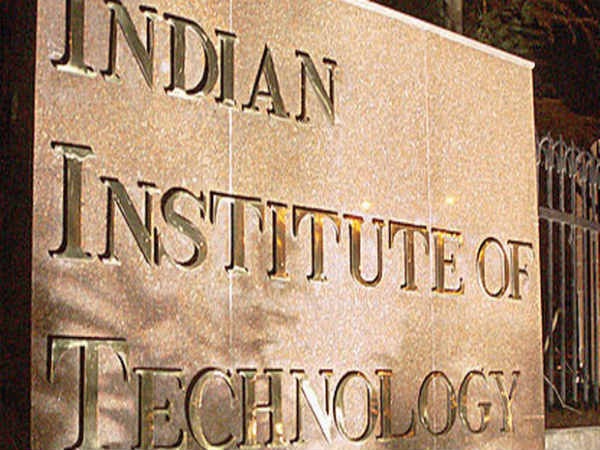This is an excerpt from a talk given by Prof. G.N. Devy in a webinar organised by Countercurrents.org in memory of KP Sasi on the topic “Politics of Language & Language of Politics”. In the video, G.N. Devy’s talk is from 12.03 to 34.15 minutes
I shall not repeat the known facts about the three-language formula or the recent debate that has heated up between Tamil Nadu and the federal government. I shall turn to the meaning of all those things, beginning with something that happened a long time back, roughly 1400 years before Christ.
Historical Context of Sanskrit and Language Hegemony
The isolated groups of people from Central Asia arrived in India, bringing with them the Sanskrit language. Given their nomadic pastoral environment and sociology, they were able to remember a lot and develop literature based on memory, which became the first Veda, the Rig Veda, that’s about 1300 years before Christ.
There is a great commentator who was steeped in the Vedic literature, Sri Aurobindo. In “The Secret of the Veda,” Aurobindo says that almost for 700 years, the Vedic rishis were recited orally, and only after 700 years had passed, an attempt was made to compile these into a text.
The gap between what was being said in oral tradition and what was written was so large that people from the times of Upanishad (Brahadaranyaka Upanishad was 7th century before Christ) kept feeling that the Vedas had practically everything in them. Though the number of speakers of Sanskrit was very small, at that time and even today, Sanskrit has been spoken by an extremely small number of people – a well-researched fact of history. Yet the status of the language went very high, because 700 years after Rig Veda was composed, nobody was able to fully understand what it was, and they felt every knowledge, every bit of knowledge is there in the Veda.
This high status of Sanskrit allowed it to become a language of hegemony in this country. It transformed, rather sadly, the way people lived their life and the structure of society. The most sad thing was that it brought in the Varna system. This hierarchy of “we who speak this language are higher type, and all others are next to us” – some closer becoming Kshatriyas, some slightly distant becoming Vaishyas, and those living in forests, the Adivasis, nomads, and laborers becoming Shudras.
Hierarchy Based on Language Acquisition
This idea of hierarchy in society, driven by acquisition of language or lack of it, has been deeply rooted in Indian society for the last 2800 years. The hierarchy-based Indian society has drawn sanctions purely from language acquisition. If the Vedas have given consent, then everything is alright – that’s what various Darshanas or schools teach, beginning with Nyaya. You don’t have to look at the logical consistency of a premise; if the Vedas endorse it, it becomes true automatically.
The Varna system caused absolutely despicable social conditions for millions for a couple of thousand years – a heinous crime against humanity. We talk of war crimes, but there was no language war in India. We don’t think of any instance when people went out with swords to kill speakers of other languages. There is also no language empire as it happened later in Europe, particularly in Germany and Italy with monolingual nations. That did not happen in India. People remained multilingual all through because they had been multilingual even before Sanskrit arrived. After Sanskrit came and spread, language hegemony as an idea got planted here, spreading like a wild cactus, like poison trees, poisoning the minds of people forever.
The Bhakti Movement as a Corrective
One corrective came during the second millennium, the Bhakti period, which some say began in Tamil Nadu, some in central India, some say it came with Sufis, and others say it came from early Assamese or Bengali. I will not debate the origin of the Bhakti movement, but Bhakti tried to torpedo language hegemony quite effectively. The Marathi poet Eknath said, “Sanskrit was created by gods, Devabhasha. Was Marathi made by thieves?” The Bhakti poets started writing in regional languages, what we call new languages, other languages.
The Constituent Assembly Debates
The second, more capable attempt took place in the Constituent Assembly debates, particularly in September on 13th, 14th, 15th of 1949. The Constituent Assembly was discussing what should happen after English, which was accepted as the language of government business for the first 15 years. One suggestion was that Sanskrit should replace English; the other suggestion was that Hindi should replace English.
The first suggestion was rejected outright. One delegate from Bengal suggested Sanskrit be the language to replace English after 15 years. Though rejected, Sanskrit was given space in the list of languages included in the schedule. The Constituent Assembly took a very wise decision of making no single language the national language. There was a language for official work – Rajya Bhasha, not Rashtra Bhasha – and Hindi was chosen.
This was a good decision. Hindi was a relatively new language, built on the earlier Hindi, Urdu, Braj and all that. I actually admire the Hindi language quite a lot because it has potential to grow globally. I love Hindi literature, songs, stories, and the speech of ordinary people, just as much as I love other languages like Kannada, Marathi, Gujarati and so on.
India as a Union of States
The Constituent Assembly defined India as a union of states. Throughout the 1950s, India, that is Bharat, was understood as a union of states. That’s what makes Bharat – when states unite, they make Bharat or India. This is the official definition of our Republic, though we are not 100% a federation due to our history with princely states and their unification.
In the 1950s, states were created specifically as linguistic states. A linguistic state reorganization commission was created, and throughout the 50s up to 1965, Punjab, Tamil Nadu, Karnataka, Maharashtra, Orissa, Bengal, and Assam were created. Where there were other issues, these were sorted out subsequently by carving out smaller states, as from Punjab or when Telangana and Andhra Pradesh separated. But primarily, Indian states are linguistic states, and the Constitution tells us that if India has to be India, it must be a union of states.
The Three-Language Formula and Educational Policy
In this situation, the three-language formula was proposed initially with excellent intentions. I support children learning as many languages as possible. It’s extremely civilized to know more than one language. Many writers, individuals, workers, and even unlettered people know multiple languages as an everyday fact in our country.
So knowing languages is not the issue. Learning multiple languages, in my opinion, helps cognitive processes develop better. But can a matter left entirely to the state be taken over by the union government? That’s a serious question. The working of India was possible because we divided responsibilities by creating a central list, a state list, and a joint list. Education was with the state; the centre had no say in it. Yet the centre is entering that terrain.
Equality and Diversity in Language Policy
Having equality throughout the nation is a good idea, but as Dr. Ambedkar noted in his thesis ” The Problem of the Rupee: Its Origin and Its Solution,” quoting an American president: “equality is a good idea, but to impose equality on unequals is not a good idea; it creates injustice.”
Given that our languages are distributed in several families – Dravidian, Tibeto-Burman, Austro-Asiatic, and Indo-Aryan – if the three-language formula doesn’t work for Austro-Asiatic or Tibeto-Burman people, how can we ask them to study three languages? How can we ask an Indo-Aryan language family speaker to study a Dravidian language, or Dravidian speakers to necessarily pick up Hindi?
Current Politics of Hindi
The larger question is: Is Hindi of today, of BJP-ruled India, trying to visualize itself as a replacement for Sanskrit as a language of hegemony? That appears to be the intention – not of Hindi speakers, many of whom feel pained that their language is being used to impose on other states – but of politicians, particularly the Bharatiya Jana Sangh in the past and the BJP, RSS, Hindutva ideology in the present, trying to create “Hindu, Hindutva, Hindustan, Hindi.” This goes straight against the spirit of the Indian Constitution, Indian democracy, and all the struggles waged through the Bhakti movement, the freedom movement, and post-independence movements for equality and rights.
Census Data and Language Demographics
The 2011 census tells us that Hindi is reported by 52 crores out of 121 crores counted. But if you look at the sub-list of languages given under the caption of Hindi, there are about 55 or 56 others, which total about 14 crores. That means 38 crores speak Hindi, while 14 crore others are, against their expressed desire, pushed into the basket of Hindi.
The census also shows the increase of Hindi language speakers from 2001 to 2011 as much higher than the increase for Bengali, Telugu, Tamil, Kannada, Marathi, Oriya, and all other scheduled languages. Telugu, which used to be the third language, has gone to fourth position. It used to be Hindi, Bengali, Telugu. Now it is Hindi, Bengali, Marathi, and Telugu.
It’s the same with Kannada, Tamil, and Marathi – their percentage growth for the decade is far lower than the growth of Hindi. If all languages in the eighth schedule have equal rights in this nation, if we are states which are linguistic states making India what it is, this kind of attitude, encouragement, projection, and often false projection, hits at the very spirit of democracy and federalism. But more than that, it hits at our desire to modernize ourselves and to come out of the language hegemony from which our civilization has suffered for two thousand years.
Language for Unity, Not Division
Hindi is a great language, but politics around it currently appears to be aggressive, deliberately trying to minimize and marginalize other languages. If that tendency increases and continues, it would be exactly lead to the revival of the Varna system – that’s what it logically points to, and that’s worrisome.
Language was never meant for quarrels, conflicts, and wars. Language is always meant for communication, sharing, and creating friendly bonds. But if politics gets down to this level, it is time for all of us to say unitedly that we want India to remain what was visualized in the Constitution. We want India to remain a modern state which will not tolerate Varna hierarchy, discrimination, and hegemony – all those things that brought suffering to Dalits, women, poor people, and people not in cities.
Subscribe to Our Newsletter
Get the latest CounterCurrents updates delivered straight to your inbox.
The politics of language today must be seen in the larger perspective of Indian civilization’s history. We should not allow anyone to drag this country and civilization back into the same mistakes from which our people have suffered for 2000 years.
Prof. G.N. Devy is a renowned Indian linguist, cultural activist, and literary critic, celebrated for his pioneering work in documenting endangered languages and promoting linguistic diversity. He has dedicated his life to preserving India’s linguistic heritage and In 1996, he founded the *People’s Linguistic Survey of India* (PLSI), a monumental initiative that documented over 780 Indian languages, many of which were on the verge of extinction. His efforts have highlighted the cultural and intellectual wealth embedded in marginalized and tribal languages, earning him national and international acclaim.
















































